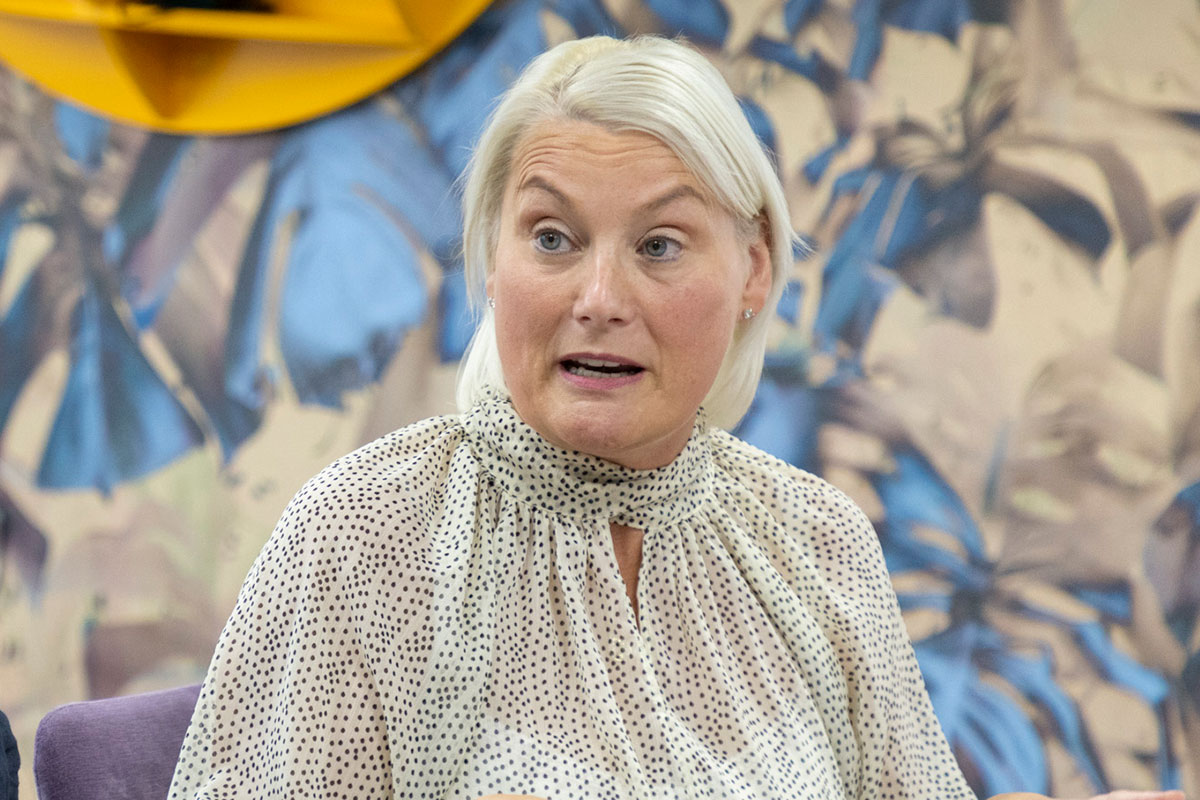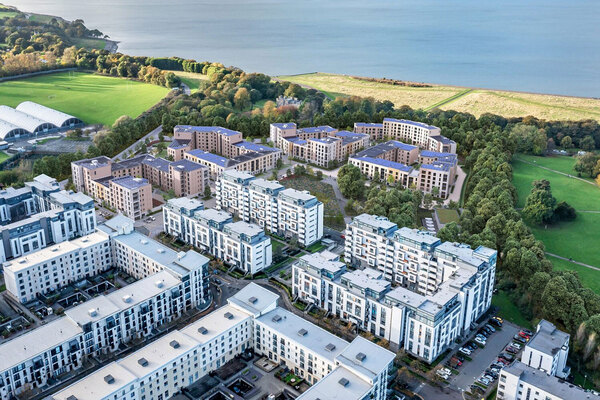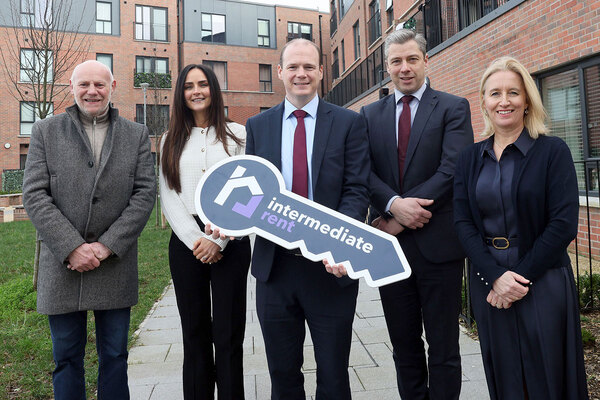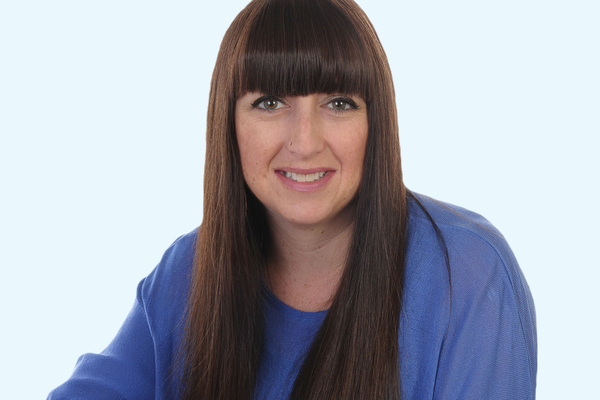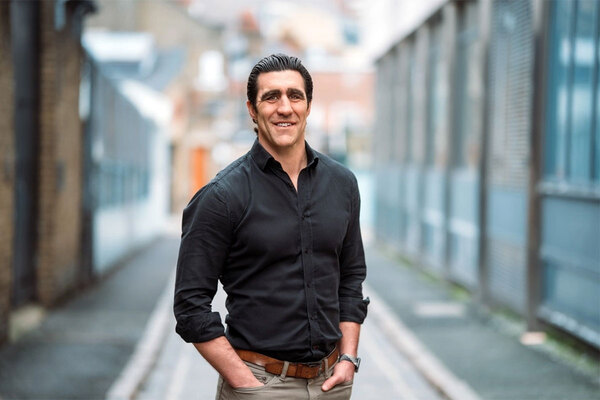How to connect housing and health services
A more joined-up approach could improve residents’ well-being. Inside Housing brought together experts from both sectors, in association with Aico, to discuss how to do it. Photography by Jonathan Goldberg
In association with:

Andrew van Doorn has spent much of his career trying to strengthen the connection between housing and health. He has pushed for greater recognition of landlords’ influence on the well-being of their tenants, and greater understanding from the NHS that there is no good health without good housing. At times, it has felt a little like having an Android phone in one hand and an Apple phone in the other.
“When we’re trying to connect health and housing, we’re trying to connect what are often quite disparate systems,” he says. “We’re trying to interface different people in different organisations that invariably don’t understand each other when they first come together.”

Mr van Doorn, chief executive of the Housing Associations’ Charitable Trust (HACT), is one of a group that has gathered for an Inside Housing roundtable. In association with technology solutions provider Aico HomeLINK, the event has brought together professionals from across housing and the health and care sectors. Together, they are considering what more can be done to deliver homes that make a positive impact on the health of individuals and communities.
Impact on health
As Inside Housing editor Martin Hilditch highlights, it is a topic on which – rightly – there has been increasing focus. The death of toddler Awaab Ishak, resulting from damp and mould in his home, has incontrovertibly highlighted the interconnect between well-being and housing. “His tragic death has driven a lot of conversations and a lot of scrutiny about the impact of poor-quality housing on the nation’s health,” says Mr Hilditch, who is chairing the event.
“We’re increasingly dealing with damp and mould,” says Elly Hoult, chief operating officer and deputy chief executive at Peabody. “But we’re also increasingly seeing issues with noise-related incidents and how that impacts on people’s health, and with overcrowding.”
In short, housing has a complicated, multi-faceted and potentially severe impact on health. But Mr van Doorn does see some reason for optimism – namely, that there is a desire to address that issue. “The conversation about this is different than it has been. I would say there’s a much greater understanding of housing within the mental health space; an understanding that housing is a really key part of improving quality and improving the experience of inpatients and improving community services.”
The problem, according to our panellists, is that such understanding is not uniform. “I think social determinants of health, such as housing and mental health, are being discussed at the national level, but there’s a lack of follow-through,” says Kadra Abdinasir, associate director of policy at the Centre for Mental Health – a charity that seeks to bridge the gap between policy, research and practice, with a specific focus on tackling inequalities. “There’s rhetoric, but it’s not necessarily followed by action or joined-up planning from the top. I think where there are great examples of good local practice, those need to be shared and understood at the national level. It’s thinking about vehicles such as integrated care boards as places to bring partners together to collaborate, share learning and co-commission services.”
For Peter Molyneux, those partners must also build appropriate expectations of one another. “It’s important to think about what health can expect from our housing colleagues in terms of housing quality, in terms of promoting health and promoting healthy living, and promoting healthy neighbourhoods in which people can live at all stages of life’s journey, regardless of what life throws at them,” says Mr Molyneux, the England director for the Global Leadership Exchange – a network supported by governments internationally to promote better mental health and mental health services – and the former chair of six NHS trusts. “Then I think the next bit is what can we expect of each other at a neighbourhood level, in terms of the integration of services that actually promote and support the kind of healthy living we want to see?”
How can we establish those expectations and make them clear? Mr Molyneux suggests one way might be via national directives – in other words, explicitly stating that housing services are something that those working in health need to actively consider and help shape.
“I think the Department of Health and Social Care needs to include housing in the strategic outcomes framework for the NHS, because there’s nothing like putting something in the strategic outcomes framework to ensure it will happen.”
He argues that the strategic outcomes framework for integrated care boards needs to be changed in a similar way. “At the moment I think they are suffering from a framework that encourages them to be performance managers rather than the strategic thinkers that they want to be,” he says.
With only 18 months having elapsed since integrated care boards became statutory, conversations about how they can best influence outcomes for local populations remain live ones.
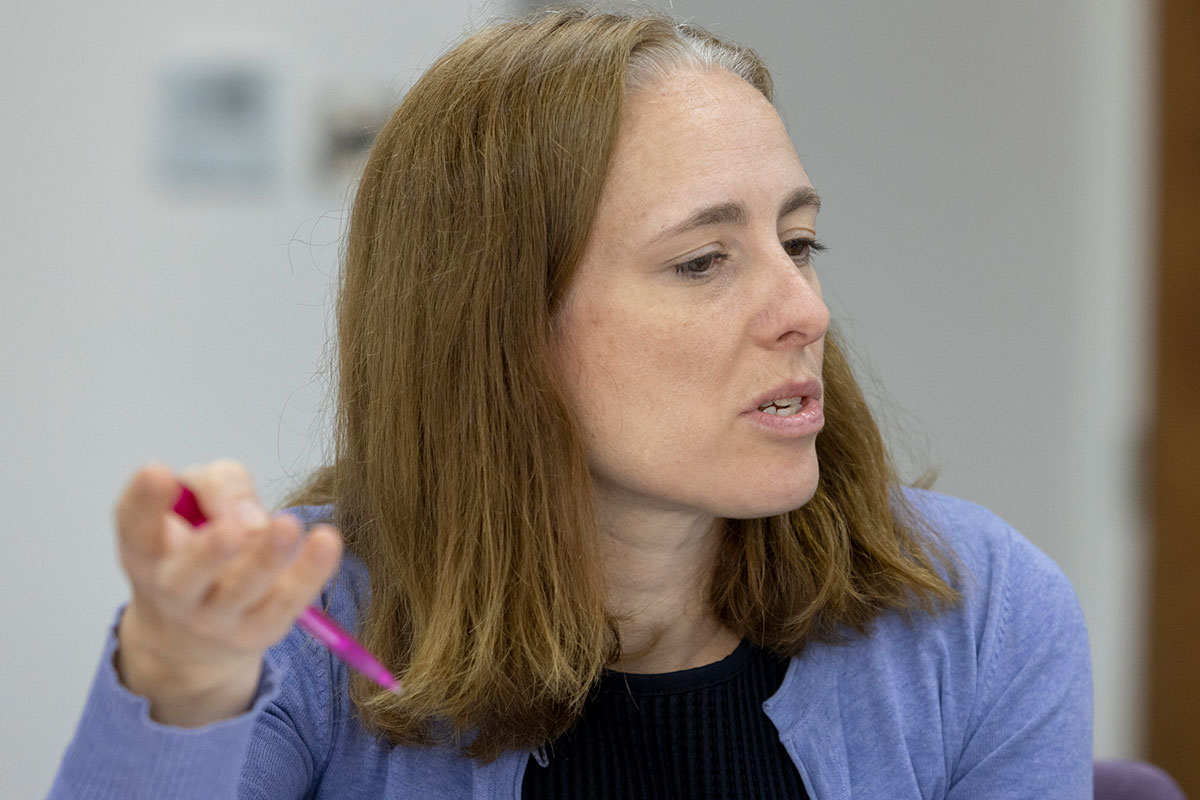
Nicola Kay is director of partnerships, population health management and reducing inequalities at North West London Integrated Care Board, which is part of a system that covers eight boroughs in the capital and unites their councils and NHS organisations. She leads a health equity programme of which a focus on the wider determinants of health is a key part.
“It’s about how we as the NHS can work with our partners to really tackle some of those inequalities that we see around the wider determinants. That includes housing, and identifying what our role is in that space. How can we best add value?”
There are hopes that a recent project on damp and mould in the local private rented sector may help start to answer that question. It has used data to drive a common understanding between the NHS and local authorities on the key issues at play.
“It looked at streamlining some of those links between the NHS and local authorities – we find people get passed around the system a bit and don’t know what to do when people have issues with damp and mould. It wasn’t a massive project, but it was something that shows we can kind of do some of that work together.”
There will undoubtedly be other areas on which such collaborations can be forged. Chris Jones is chief executive of Aico HomeLINK, which provides sensors to monitor the quality of indoor air. He says damp and mould has driven many social landlords to invest in the technology, but he points to other issues which technology can also help monitor: the likes of carbon monoxide levels, radon and particle pollution.
“There is so much across the indoor environment which, if it was changed, would impact people’s lives across the board,” he says.
Tackling issues together
So how can housing and health best team up to tackle such issues, as well as the broader ways in which housing affects health?
Connie Jennings, director of stronger communities at WHG, suggests the first step is to learn the lingo. “Health speak was new to me as a language,” she explains. “I joined HACT’s programme on making sense of the health system and my mind was blown. In my view, the culture in health is that they’re in charge. They must have all the answers and the solutions, and they must do everything.
“They are always measured on clinical outputs and outcomes, so to have a conversation about prevention and social determinants can be quite difficult.”
Through the Black Country Health and Housing Forum, which brings together all local housing providers, there have been opportunities to make those conversations easier. The result has been everything from a workforce programme through which 200 of WHG’s customers are now employed in the local NHS, to a scheme focused on asthma-friendly homes.
“All a housing provider needs to do is link to their local hospital, identify children or adults going in with respiratory conditions, and agree a protocol that they will send a surveyor out to that home to check that there are no environmental factors, and let the hospital know the results. At WHG we have a surveyor who checks the environmental factors, and a social prescriber who deals with all the social issues that might be driving that asthma. But we don’t do this as a housing provider on our own. I work with the clinical lead for asthma in the Black Country, and we ensure people are re-engaged in their asthma community services.”
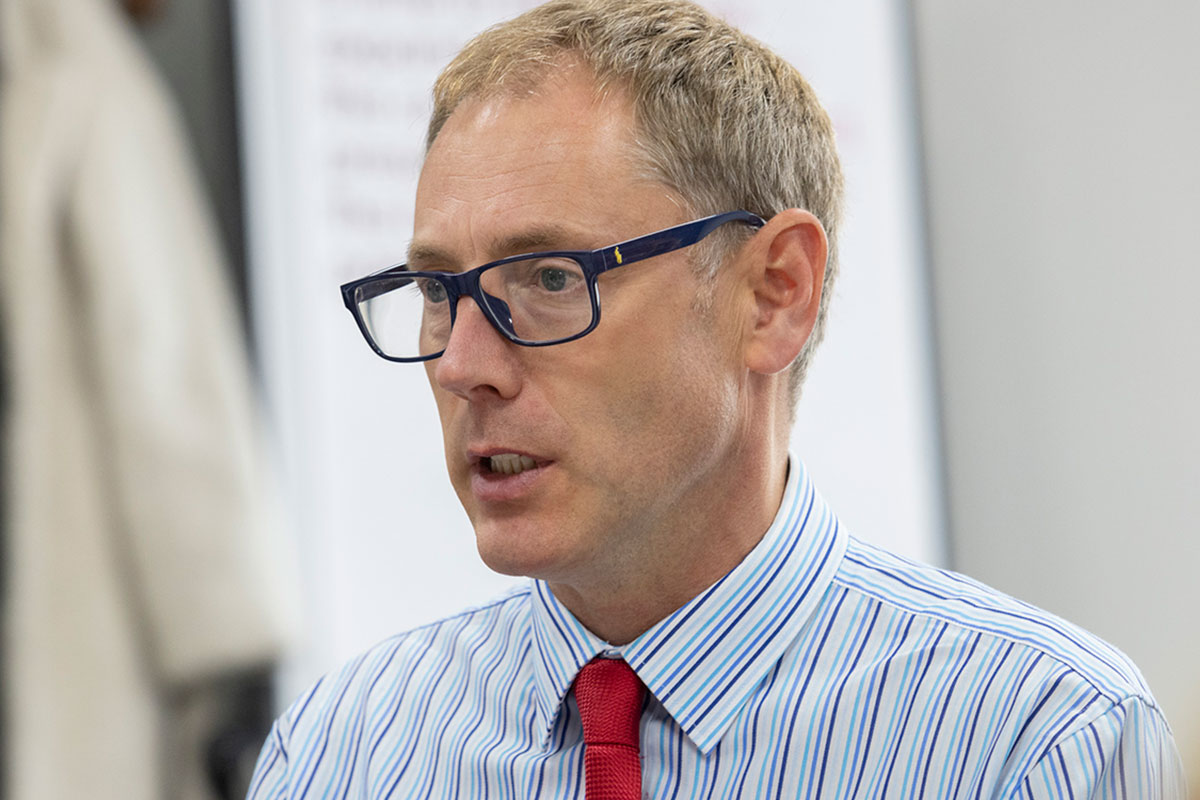
She emphasises the importance of the housing sector finding like-minded individuals in health, and vice versa. Mr van Doorn agrees, saying delivering healthy homes will involve having many more “chameleons”, who are equally comfortable in both settings.
It just so happens that there is one of those currently rare beasts sitting at the table for this event. In 2020, Jonathan Pritchard joined Southern Health NHS Foundation Trust from Home Group and in so doing became one of the NHS’s first directors of housing (he has since become associate director for population health and equity at the trust).
The role was created in part because of previous frustrations on both sides of the fence. “The local authority had a very innovative leader in their housing space who wasn’t happy with the response that they were getting from our mental health community teams,” he says. “Housing was seen as really needy, because they were always on the phone to the community teams about these people, and housing saw the mental health teams as unresponsive and, at worst, uncaring, because they couldn’t respond quickly enough to what the housing team were asking for. So we got together and said, ‘We just need to do this in a different way.’”
The result was the embedding of a mental health clinician into that housing team, predominantly to work with people experiencing or at risk of homelessness “to really work with them in a different way around their health outcomes and housing need”. There have been wins on both of those. Having a clinician on outreach with rough sleepers has enabled many of those people to come off the streets – something housing alone had struggled to make happen. Meanwhile, the NHS is reaching people much earlier. Only a third of those with whom the clinician works had previously been engaging with the trust’s services.
As Mr van Doorn puts it: “Both sectors [health and housing] need to be prepared to shift their mindsets about how we do business, to actually deliver a greater impact for people.”
“It’s about professional respect,” Ms Jennings adds. “They don’t understand housing, we don’t understand health, and both of us need to leave that ego at the door and be really humble and say: ‘What can I do for you? What can you do for me?’”
Participants
Kadra Abdinasir
Associate director of policy, Centre for Mental Health
Martin Hilditch
Editor, Inside Housing (roundtable chair)
Elly Hoult
Chief operating officer and deputy chief executive, Peabody Trust
Connie Jennings
Director of stronger communities, WHG
Chris Jones
Chief executive, Aico HomeLINK
Nicola Kay
Director of partnerships, population health management and reducing inequalities, North West London Integrated Care Board
Peter Molyneux
England director, Global Leadership
Jonathan Pritchard
Associate director – population health and equity, Southern Health NHS Foundation Trust
Andrew van Doorn
Chief executive, HACT
Recent content in association with Aico
What will our future homes look like?
As the pace of change in technology accelerates and the use of AI becomes more ubiquitous, Inside Housing speaks to Aico’s Michael Wright to find out how this will impact social housing in the future
Supporting tenants affected by fuel poverty
Inside Housing and Aico’s third Give Fuel Poverty a Voice survey – and a workshop as part of this year’s campaign – paint a mixed picture of the current status of fuel poverty in the UK
CPD webinar on demand: the importance of good quality data to good air quality
As part of Inside Housing’s CPD offering, watch the full webinar, ‘The importance of good quality data to good air quality’, and earn CPD minutes
Sensor technology to keep homes safe
Jordan Toulson, head of product at HomeLINK, explains how networks of sensors that gather data and exchange information can make homes safer, warmer and more energy efficient
How smart devices are transforming homes
Chris Jones at smart home technology provider HomeLINK explains the role technology can play in improving homes and helping residents to better understand where they live
Is the sector providing healthy homes?
Inside Housing ran a survey for the new Healthy Homes campaign, in association with safety tech specialist Aico, to find out how effective the sector is at creating healthy homes for residents
CPD module: the importance of indoor air quality
What is indoor air quality, why is it important, and how can it be improved in social housing? Professor Tim Sharpe, head of the department of architecture at the University of Strathclyde, explains. Read this article, take a quiz, earn CPD minutes




